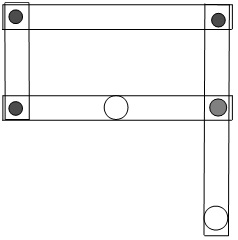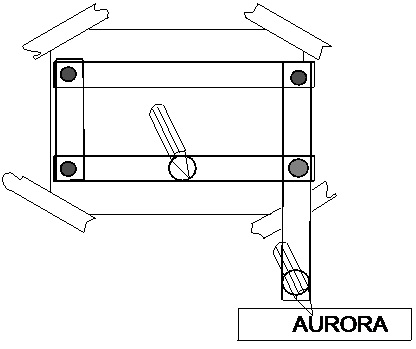A pantograph, first invented in the early 1600s, was used to make exact copies before there were any Xerox machines around. It’s a simple mechanical device made up of four bars linked together in a parallelogram shape.
Here’s how it works: by simply tracing an object with the pointer, the pantograph makes a copy larger or smaller depending on which point you attach your pen and pointer.
Some pantographs were adjustable – meaning that they could change their pivot points to adjust the size of the copies.
We’re going to make one of these to see how geometry can really be used in the real world. Are you ready?
Here’s what you do:
Download Student Worksheet & Exercises
Materials:
- paper
- 2 mechanical pencils
- masking tape
- 4 brass fasteners
- 2 yardsticks
- strong scissors or saw to cut the yardsticks into three 16″ lengths and one 8″ length
- drill with drill bits
- scrap piece of cardboard, wood, or other old table space to practice on (your table may get scratched)
Exercises
- Identify the name of the image at the right:
- What is the use of the instrument shown?
- Why is the drill necessary in assembling the instrument?
- What is the purpose of the masking tape in the above procedure?
- Identify the names of the two pencils as used in the drawing procedure.
Use the diagram below to answer question 6, 7 and 8.
- What is the size of the object at B as compared to that of the original object?
- What is the size of the object at A as compared to that of the original object?
- How is the joint at C treated to allow the instrument to work as designed?
- How are the holes at the joints treated so ensure the instrument works efficiently?
- When the instrument is at work, what kind of geometrical figure does is formed between the horizontal and the vertical bars?

